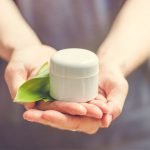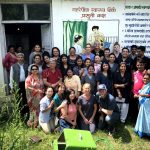Robot Helps Kill Germs in Hospital Rooms
Node Smith, ND
Germ-zapping robot called LightStrike from Xenex is used at CPMC
A germ-zapping robot called LightStrike from Xenex is used at California Pacific Medical Center (CPMC) hospitals to help curb the spread of infectious diseases. This mobile robotic device is used in intensive care units, medical surgery units, operating rooms and in rooms where patients suffering from Clostridioides difficile (also known as C.diff), Methicillin-resistant Staphylococcus aureus (MRSA) and other microorganisms, were discharged. CPMC, part of Sutter Health’s integrated network of care in Northern California, now employs this mobile robotic technology at all campus locations—with a total of seven robots in operation.
Robot emits dozens of bright pulses of (UV) light per second that bounce into walls, floors, ceilings and hard-to-clean places
The LightStrike robot emits dozens of bright pulses of (UV) light per second that bounce into walls, floors, ceilings and hard-to-clean places where manual cleaning might miss. The UV light is absorbed by and fuses the DNA of microorganisms, causing the cell to break apart and dissolve, deactivating pathogens. A patient room can be disinfected in less than 15 minutes using this system.
The LightStrike robot not a replacement for manual disinfecting and cleaning
The LightStrike robot is not a replacement for manual disinfecting and cleaning by staff. It is another tool used in the hospitals to enhance staffs’ efforts to combat infectious diseases and to create a safer, cleaner environment for patients and their families.
Internal data shows a decline in infectious diseases at CPMC
Internal data shows a decline in infectious diseases at CPMC due to an overarching effort associated with training, improved hand hygiene, and diligence in disinfecting patient rooms after discharge — which includes the use of the Xenex technology.
Sutter Medical Center, Sacramento and Sutter Roseville Medical Center — CPMC’s sister hospitals in the Valley — also use the Xenex Germ-Zapping Robots to assist in their efforts to disinfect rooms. They have also seen similar declines in rates of infectious diseases.
 Node Smith, ND, is a naturopathic physician in Humboldt, Saskatchewan and associate editor and continuing education director for NDNR. His mission is serving relationships that support the process of transformation, and that ultimately lead to healthier people, businesses and communities. His primary therapeutic tools include counselling, homeopathy, diet and the use of cold water combined with exercise. Node considers health to be a reflection of the relationships a person or a business has with themselves, with God and with those around them. In order to cure disease and to heal, these relationships must be specifically considered. Node has worked intimately with many groups and organizations within the naturopathic profession, and helped found the non-profit, Association for Naturopathic Revitalization (ANR), which works to promote and facilitate experiential education in vitalism.
Node Smith, ND, is a naturopathic physician in Humboldt, Saskatchewan and associate editor and continuing education director for NDNR. His mission is serving relationships that support the process of transformation, and that ultimately lead to healthier people, businesses and communities. His primary therapeutic tools include counselling, homeopathy, diet and the use of cold water combined with exercise. Node considers health to be a reflection of the relationships a person or a business has with themselves, with God and with those around them. In order to cure disease and to heal, these relationships must be specifically considered. Node has worked intimately with many groups and organizations within the naturopathic profession, and helped found the non-profit, Association for Naturopathic Revitalization (ANR), which works to promote and facilitate experiential education in vitalism.
Node Smith graduated from the National University of Natural Medicine (NUNM) in 2017, and is currently licensed as a naturopathic physician in Oregon and working towards becoming licensed in Saskatchewan, Canada as well.










